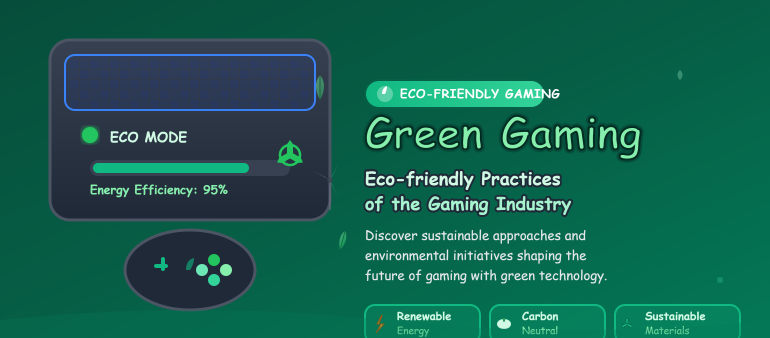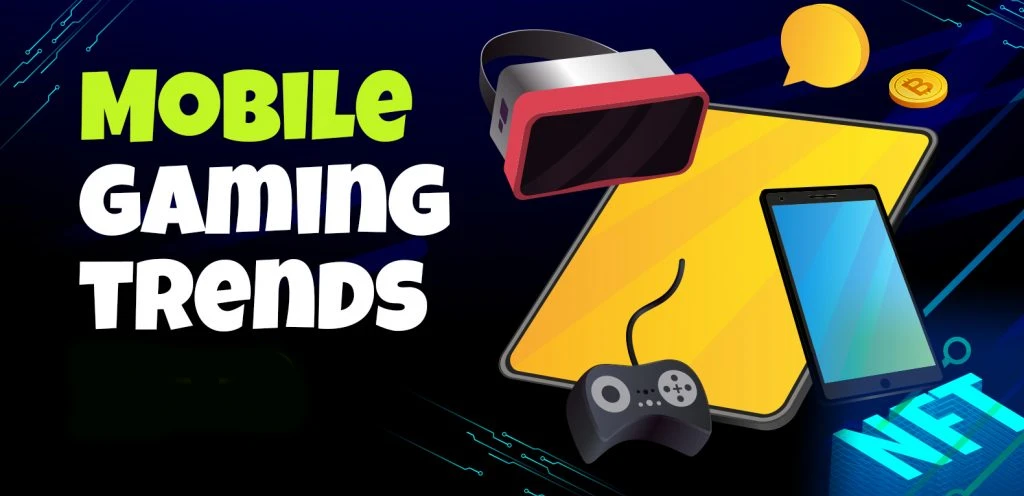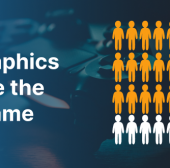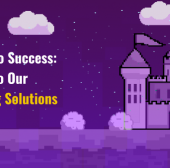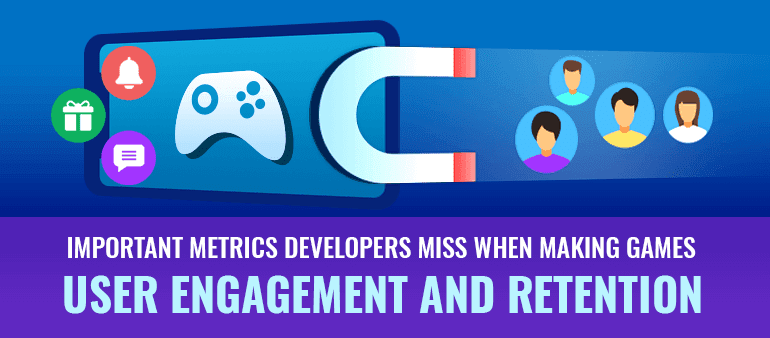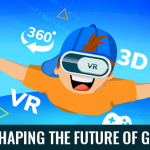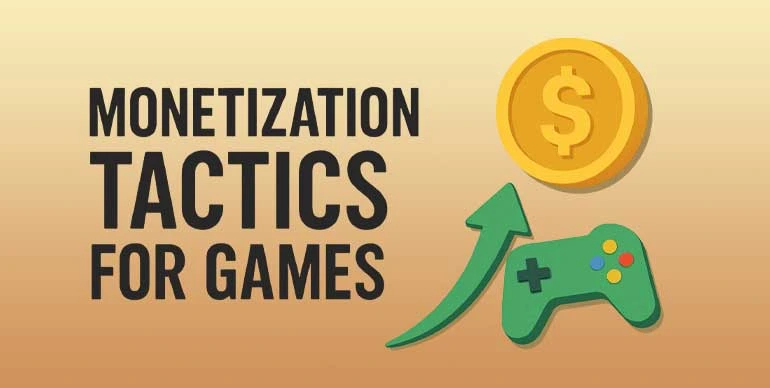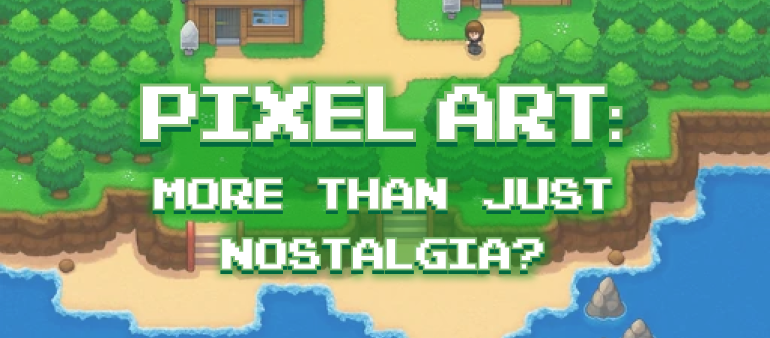Welcome to Level Green, where every watt is loot and every frame is a choice. Press Start and you step into a living world powered by clouds, consoles, and communities. But there is a final boss waiting in the shadows: wasted energy and rising e-waste that rarely respawns through proper recycling streams.
Your HUD lights up. Data centres are surging in electricity demand as AI and cloud expand. Hardware upgrades keep cycling faster than they are recovered, leaving behind a footprint that does not disappear at Game Over. The fix is simple: smarter design, longer lifecycles, and a proper endgame for repair and take-back.
The mission is clear. You need to build for efficiency. Team up with game development companies and game app developers who are turning live operations into real-world impact. Play through cleaner grids so every toggle, patch, and trade-in counts in the main campaign, not just as a side quest. The next stage takes you behind the screen - into the power surges, the waste loops, and the clever fixes pushing gaming toward its clean-energy future.
By the time you finish reading this post, data centers around the globe will have burned through enough electricity to power thousands of homes-and most of it, just to keep our virtual worlds alive.
The Problems: Power, Waste, and Balance
To level up sustainably, you first have to see the terrain for what it is. These are the hidden drains, the relentless upgrade cycles, and the habits that keep gaming’s footprint respawning.
Why green gaming matters
Gaming now runs on the same backbone as AI and cloud. Every hour you play draws from the same global energy story. Device efficiency still matters, but the real difference lies in how platforms source power, manage workloads, and commit to cleaner grids.
Forecasts by Data Center Dynamics show that data-centre electricity use could climb from the mid-hundreds of terawatt hours today to the high-hundreds by 2030. That is a huge range, and it is why transparency matters more than ever. We need to know where data centres are built, how they cool, and how closely they match clean energy on an hourly basis, not just annually.
This is not just about infrastructure anymore. It is about the invisible power line that runs through every download, every match, and every game update you launch.
The E-waste Problem
Now to the other villain: e-waste. According to the Global E-waste Monitor, 62 million tonnes were generated in 2022, and only 22.3% was properly collected and recycled. Without stronger systems, that number could reach 82 million tonnes by 2030. That is not just a statistic; it is a story of lost materials, lost value, and a growing pile of hardware that never levels up into anything new.
UN partners warn that waste is rising faster than recycling can keep up, and that low recovery of critical materials leaves billions in value untapped. The lesson is simple. Repairability, certified take-back, and design for recycling are not side mechanics anymore; they are the core game loop.
Cloud Gaming and Energy Use
Cloud gaming extends device lifespans and slows down the upgrade cycle, which is a win for e-waste. But it shifts energy demand upstream to data centres. Whether that is a good trade depends on where that energy comes from.
Clean-powered regions and efficient facilities can make cloud gaming cleaner for some resolutions and sessions. On fossil-heavy grids, or with inefficient streaming, well-tuned local hardware often comes out ahead.
Cloud vs local impact
Bitrate and resolution: Higher resolutions and bitrates drive up energy use across networks and data centres. A 1080p efficient stream on a clean grid usually beats a 4K high-bitrate session powered by fossil fuels.
Session length and idle time: Idle streams add up quickly. Features like autosleep or pause-on-idle save energy without interrupting play.
Grid carbon intensity: Location changes everything. Providers with efficient facilities and 24/7 clean energy commitments tilt the balance toward lower emissions, especially when players time their sessions with cleaner grid hours.
So what comes next?
The game can’t be won by dodging hazards alone. It demands upgrades, fresh tactics, and an all-new strategy-because if fighting the same battles is what’s holding us back, then real change drops in with epic upgrades - not just extra lives, but new ways to win.
Logic Simplified is constantly evolving with the latest trends and technologies. Get in touch to know all about our game development process.
The Solutions: Building Smarter, Playing Cleaner
Yet where there’s pressure, there’s progress. Across the industry, alliances and innovations are emerging, proving that gaming can compete and care at the same time.
Alliances and player mobilisation
Take for example Playing for the Planet. It is turning environmental action into part of the play experience itself. Through the 2025 Green Game Jam, studios are being challenged to create “green activations”: themed events, challenges, and cosmetics that reward real-world sustainability.
What makes this powerful is its reach. Players are already inside these worlds. You do not need to pull them away to teach something new; you meet them where they play. And it is working. Public updates show consistent progress, structured measurement, and an industry learning that environmental awareness can live right alongside entertainment.
Sustainable Game Development
Behind the scenes, studios are rethinking how they build. Sustainability is no longer a marketing line; it is written into code, content pipelines, and sprint reviews.
With alliance guidance and energy calculators, teams are learning where power is spent, from rendering pipelines to server loads, without losing fidelity or fun. Internal carbon accounting and better labelling systems help align asset budgets and platform choices with environmental goals.
Sustainability is not a theme anymore. It is part of the technical process itself.
Cleaner Data Centres and Cloud
For cloud and live services, everything depends on three levers: the energy source, efficiency, and timing. The path forward is clear: long-term renewable contracts, 24/7 carbon-free energy goals, better cooling, and grid-aware scheduling.
Critical reviews remind us that uncertainty is real, and the answer is transparency. Build efficient facilities, match energy hourly, and report siting clearly. Offsets alone will not win this fight.
Energy-efficient hardware builds
For players, efficiency is part of the skill tree. You can design your setup to make a difference. Choose ENERGY STAR displays, 80 PLUS power supplies, and GPUs that scale dynamically. Cap your frame rates or use adaptive sync for lighter sessions. These small tweaks save energy without sacrificing experience. Additionally, combine eco modes with background discipline, and you will see instant rewards: lower bills, fewer emissions, and hardware that runs smartly, not wastefully.
Greener Esports and Communities
The shift is not just digital. Esports and gaming communities are starting to rethink how events are run: choosing energy-efficient venues, reducing travel, and using credible carbon-neutral certifications. Building on this, teams are also bringing the Green Game Jam spirit to tournaments, adding nature-themed activations and transparent offsetting that make sustainability part of the story rather than an afterthought.
Big Companies Taking Action
The movement is scaling fast. Major publishers are aligning around shared environmental goals and building sustainability directly into live games across console, PC, and mobile. This movement is gaining traction as recent 2025 activation announcements show this is no longer a one-off initiative. It is becoming part of the roadmap, with studios shifting sustainability from a campaign to a core design principle.
Industry progress and key statistics
Gaming sustainability is now shifting beyond hype to practice, with studios integrating it into live games and services platforms improving in their powering capabilities. In 2025, the Green Game Jam brought in over 55 studios to implement so-called green activations into the live titles and connect their interaction with nature outcomes by meeting them where they are (official hub and theme update). An example is the Honor of Kings, which links in-game achievements to purchasing and retiring high-integrity carbon credits that support individual project foresting, and the information is communicated by the publisher.
The backend must clean up and become more transparent to maintain this impact. The deeper challenge lies in the infrastructure powering these efforts. True sustainability in gaming depends on cleaning up the digital backbone itself, from cloud platforms to device lifecycles. Studios and publishers are increasingly being held accountable for the emissions tied to their backend operations, with progress hinging on placing data centers on cleaner power grids, achieving lower Power Usage Effectiveness (PUE), and adopting 24/7 carbon-free energy strategies.
How Everyone Can Help
If you have ever wondered what your role could be in greener gaming, the answer depends on where you play in the ecosystem. Whether you are a player, developer, game designer, or organiser, every action adds up-from the way you build your setup to how you power your play.
Players: small changes, real impact
Start with your setup. Choose ENERGY STAR displays and 80 PLUS power supplies, and pick GPUs that match your actual needs. Cap your frame rates or use adaptive sync, these tiny tweaks can save energy without affecting the experience.
Think about when you play too. Running downloads or updates during cleaner grid hours means your power is coming from a greener source. And when your hardware reaches its end of life, use certified recycling or trade-in programmes instead of tossing it out. Repair what you can. Every console or component that stays in circulation counts.
Studios: building better worlds
For developers and studios, sustainability starts long before a game launches. Setting energy-aware goals in production - from asset creation to server management, helps spot and reduce energy spikes early.
Design choices matter too. Simple features like autosleep in lobbies, dynamic resolution caps, or power-aware presets can save vast amounts of energy across millions of players. The key is to make these features invisible but effective, woven naturally into the experience.
And finally, be transparent. Sharing how emissions are measured and reduced builds trust and sets an example for others to follow.
Platforms and cloud providers: powering progress
For platforms and cloud operators, impact scales fast. Pursuing 24/7 carbon-free energy, siting data centres in cleaner grids, and improving cooling efficiency can shift the industry’s overall footprint.
Optimizing encoding, reducing idle workloads, and reporting regional energy intensity publicly helps everyone-developers, studios, and players-make informed decisions about how and when to play.
Events and esports: playing for the planet
In the world of live tournaments and esports, sustainability is becoming part of the format. More organisers are cutting down on travel, choosing hybrid or regional events, and booking energy-efficient venues.
Behind the scenes, they are reducing idle power from AV setups and using credible carbon-neutral practices to offset what remains. And on stage, they are bringing it full circle-turning crowd energy into real-world environmental impact through Green Game Jam-style activations.
The Road Ahead
The next evolution of gaming is not just visual; it is ethical. Expect sharper diagnostics, clearer efficiency labels, and broader adoption of 24/7 carbon-free energy.
Studios are building sustainability into production. Platforms are improving cooling, siting, and procurement. And alliances like Playing for the Planet are proving that what happens in-game can lead to real-world change.
The default mode is shifting from extractive to regenerative. Gaming is still about fun and fidelity, but now it can also be about responsibility.
At Logic Simplified, we strive to build sustainability into the game loop. From Unity and Unreal builds to live ops, we design for efficiency, optimize server loads, enable power‑aware features, and support certified repair and take‑back so your title ships fast and plays clean. Whether you’re launching a new card game, board game, puzzle game, or upgrading an existing one, we are committed to the cause of Green Gaming..
Write to us at enquiry@logicsimpified.com or contact us to know more.
 Get a Quote
Get a Quote

